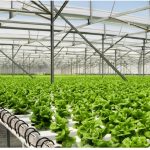Introduction
The global ink additives market is evolving rapidly, fueled by a variety of technological, environmental, and economic trends. Ink additives play a crucial role in enhancing the performance, durability, and appearance of inks used across various applications, including packaging, commercial printing, and digital printing. As industries continue to demand higher-quality printing solutions with improved functionality, the demand for advanced ink additives is expected to grow significantly.
In this blog, we explore the top five key drivers shaping the future of the global ink additives market, analyzing their impact on growth, innovation, and market expansion. Whether you are a stakeholder in the printing industry, a chemical manufacturer, or an investor, understanding these drivers is essential for navigating the evolving landscape of ink additives.
Increasing Demand for Eco-Friendly and Sustainable Printing Solutions
One of the most influential trends in the global ink additives market is the rising demand for eco-friendly and sustainable printing. With increasing environmental regulations and growing consumer awareness, companies are seeking alternatives to conventional inks that are known to emit volatile organic compounds (VOCs) and other harmful substances.
Key Points:
- Water-based and bio-based inks are gaining popularity due to their lower environmental footprint.
- Low-VOC and solvent-free additives are in high demand to meet global regulatory standards such as REACH and EPA guidelines.
- Sustainable packaging in industries such as food & beverages and cosmetics is pushing for green ink formulations.
Impact: This trend is expected to drive innovation in additive formulations, with manufacturers investing in R&D to develop biodegradable and non-toxic additives that align with sustainability goals.
Technological Advancements in Digital and 3D Printing
The expansion of digital printing and the emergence of 3D printing technologies are revolutionizing the printing industry. These advanced printing methods require specialized ink formulations that can deliver high resolution, better adhesion, and fast drying times.
Key Points:
- The growth of inkjet and electrophotographic printing has led to a surge in demand for rheology modifiers, dispersants, and defoamers tailored for digital inks.
- 3D printing inks often require functional additives that offer superior thermal stability, electrical conductivity, or UV curing capabilities.
- Nano-additives are increasingly used to enhance ink performance in digital applications.
Impact: With digital and 3D printing technologies gaining traction across packaging, textiles, and electronics, the ink additives market is poised for robust growth in this segment.
Expanding Packaging Industry and Label Printing
The global packaging industry, particularly in emerging markets, is witnessing rapid growth due to rising e-commerce, urbanization, and changing consumer lifestyles. This surge is creating an increased demand for high-performance inks that can withstand diverse substrates and environmental conditions.
Key Points:
- Flexible packaging, labels, and corrugated boxes require inks with improved rub resistance, adhesion, and color vibrancy.
- Additives such as slip agents, wax emulsions, and anti-blocking agents are essential to maintain print quality.
- Brand owners are increasingly focused on attractive and durable packaging, further boosting demand for advanced ink additives.
Impact: The expansion of the packaging industry will significantly influence the ink additives market, especially in regions like Asia-Pacific and Latin America where manufacturing is booming.
Rising Focus on Performance-Enhancing Additives
As printing applications become more demanding, there is a growing need for ink formulations that offer superior performance attributes. This has led to a surge in demand for high-performance additives that enhance ink properties such as drying time, flow, gloss, and substrate adhesion.
Key Points:
- Dispersing agents ensure uniform pigment distribution, improving color strength and stability.
- Defoamers and wetting agents enhance print smoothness and minimize surface defects.
- Anti-foaming agents are particularly critical in high-speed printing processes.
Impact: This driver is pushing manufacturers to innovate and differentiate their products by offering additives that cater to niche performance requirements, especially in industrial and textile printing.
Regulatory Landscape and Safety Standards Compliance
Government regulations and safety standards play a critical role in shaping the ink additives market. With heightened scrutiny over the use of hazardous chemicals in printing, manufacturers are compelled to adhere to stringent norms.
Key Points:
- Regulations such as REACH in Europe, TSCA in the U.S., and GHS globally influence additive formulation and labeling.
- There is a growing emphasis on food-grade ink additives for packaging that comes in contact with consumables.
- Compliance with certifications such as ISO 2846 and EN 71-3 is becoming a prerequisite for market access.
Impact: The regulatory driver is fostering transparency, better formulation practices, and accelerated adoption of safe, compliant additives.
Regional Insights Supporting Market Growth
Asia-Pacific: The Asia-Pacific ink additives market is projected to grow at the highest CAGR, driven by rising industrial output, demand for flexible packaging, and increasing investment in commercial printing sectors in countries like China, India, and South Korea.
North America and Europe: These regions are at the forefront of sustainable innovation and digital printing technologies, contributing to the development of new-generation additives.
Latin America and Middle East: Emerging infrastructure, rising disposable incomes, and the growth of local printing industries are expected to boost regional market expansion.
Future Outlook: Opportunities and Challenges
Opportunities:
- Integration of AI and machine learning for ink formulation optimization.
- Rising demand for UV-curable and hybrid ink systems.
- Expansion of smart packaging and printed electronics to create new additive needs.
Challenges:
- Raw material price volatility impacting profit margins.
- Limited awareness about advanced additive technologies among small-scale printers.
- Supply chain disruptions, especially for specialty chemicals.
Conclusion:
The global ink additives market is undergoing a transformative phase, with multiple dynamic forces driving its growth. From eco-friendly innovations to digital printing advancements and regulatory changes, the market is full of opportunities for manufacturers, suppliers, and stakeholders. Companies that align their strategies with these top five drivers will be well-positioned to capitalize on future demand and stay competitive in the evolving landscape.
As sustainability, performance, and technology continue to define the future of printing, the importance of innovative and regulatory-compliant ink additives will only increase. Whether you’re looking to invest, innovate, or expand in the ink additives market, staying ahead of these key drivers is critical to success.
Explore our latest research study on the Global Ink Additives Market for in-depth insights, growth forecasts, and competitive analysis.
![[Market Research Reports] – Research Google News Blog | VMR.Biz](https://www.vmr.biz/wp-content/uploads/2022/12/logo-removebg-preview.png)











